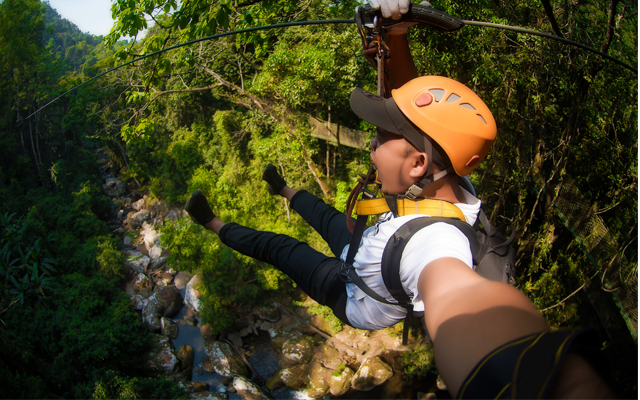
WTTC has released a set of health guidelines to support the safe resumption of adventure tourism, which it foresees will climb in popularity as travellers seek more unique experiences post-Covid.
Backed by UNWTO, the WTTC protocols also take into account guidelines from WHO and the Centre for Disease Control and Prevention.

Protocols for the adventure tourism industry were compiled on the basis of insights and frameworks developed by the Adventure Travel Trade Association (ATTA), in collaboration with key tour operators such as Abercrombie & Kent, Eurotur, Intrepid and The Travel Corporation.
Within these protocols, the adventure tourism industry refers to a wide variety of experiences including cycling, rafting, trekking, skiing, snowboarding, wildlife safaris and culinary tours, among others.
WTTC predicts that this tourism segment will see growth in the post-Covid landscape, as they are not only mostly conducted outdoors which reduces risk of virus transmission, but group sizes can be managed to allow for physical distancing.
Gloria Guevara, WTTC president & CEO, said: “Adventure tourism is becoming increasingly popular amongst travellers and will represent a key component to travel in the new normal. According to our recently launched Covid-19 Travel Demand Recovery Dashboard, it is also one of the fastest growing segments, which is why it is vital to establish measures allowing safe travels for adventure travellers.”
ATTA CEO Shannon Stowell added: “As tourism professionals, our priority now is to see adventure travel come back strong, resilient and sustainably. WTTC and ATTA collaborating on global guidelines for adventure travel is a significant effort to support companies worldwide in reopening as quickly and safely as possible.”
Measures include:
• Reduce participant capacity limits for activities as appropriate to allow for physical distancing
• Ensure activity difficulty levels do not exceed guest ability and skill, thus, decreasing the need for a possible rescue
• Provide clear, consistent, and up-to-date communication on new health and hygiene protocols via the organisation’s channels, both digitally and physically through clear signage
• Promote contact tracing apps if required by local legislation
• Inform guests about support available if questions or concerns arise
• Share guest guidelines ahead of trip or activity digitally and in person upon arrival on the basis of advice from health authorities, which may include the wearing of face masks or coverings, guidance on hand hygiene and avoiding physical contact. Consider having consumers acknowledge guidelines
• Encourage guests to purchase tickets online if possible
• Keep the same households, families, or members of group bookings together for all activities to lower risk of exposure for those outside of that unit, wherever possible
• Ensure, where possible, that each guest can handle their own equipment and gear for the duration of the trip. Where possible, guests should be encouraged to bring their own equipment or gear, such as bikes, skis, and helmets, among others
• Limited physical contact and queuing where possible



















